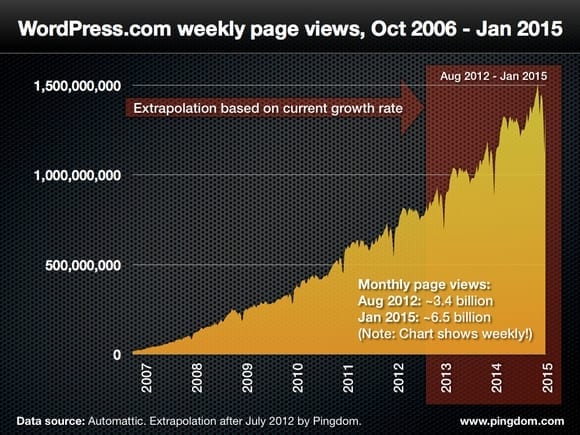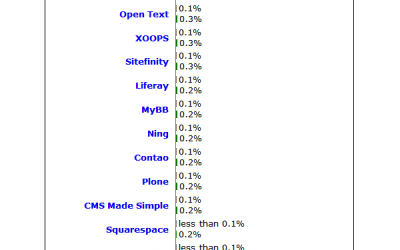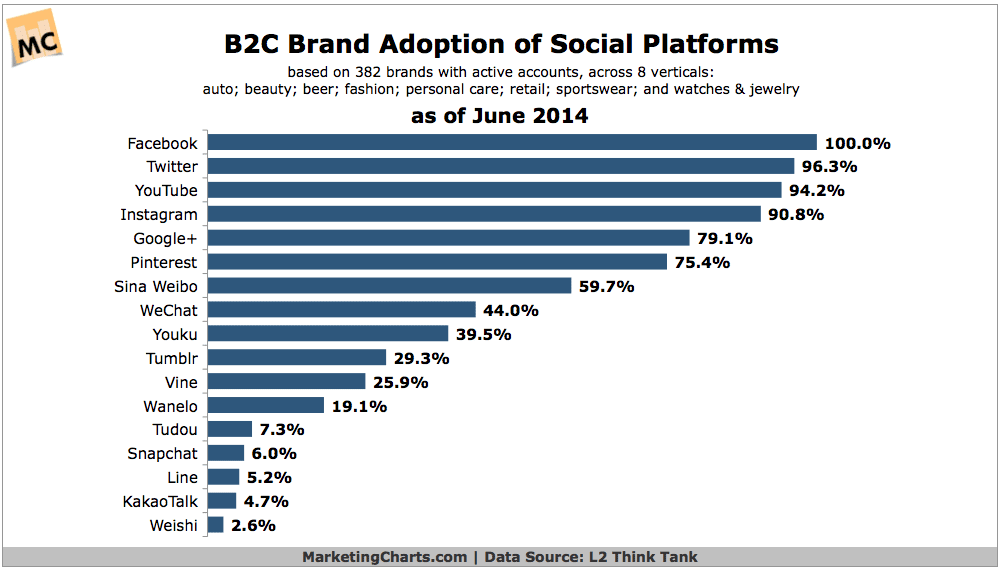WordPress is the free platform that powers most every blog online, and increasingly is the preferred content management platform of choice for overall website development.
-
49% of the top 100 blogs use WordPress
-
22% of US websites are developed on WordPress

![]()
Excellent summary presented below via NetHosting
Overview
WordPress is the evolved product of Matt Mullenweg and a free blogging stationary for almost half of the blogging websites in existence. Released in 2003, millions of bloggers and website creators have flocked to WordPress to utilize its easy-to-use service and to power their websites. From its humble beginnings to its rise to fame and importance, it’s obvious how influential WordPress really is.
History
WordPress started out as a piece of code which was used to improve digital writing. It stemmed from the b2/cafelog which was released in 2001. After some modifications by Matt Mullenweg and Mike Little, it became a licensed product in 2004 under the name “WordPress,” a suggest name by Mullenweg’s personal friend Christine Selleck.
Since then, WordPress has been very proactive in releasing new and improved versions, fixing errors or adding valuable features. Upon each release of the newer versions of the WordPress application, the membership would more than double. In 2005, version 1.5 was released and attracted 900,000 users. In 2006, there were 1,545,703 users. In 2007, the membership almost doubled with 3,816,965 users. The developers at WordPress continued to develop new themes and plug-ins which only improved the quality of the blogging site and attracted an increasing number of users.
In 2006, WordPress received some major funding by Polaris, Radar, True Ventures, and the New York Times Co., receiving US$29.5 million. Since then, WordPress makes its money by selling specially designed themes, offering premium account features, and from its web hosting/support services.
Each version of the application is named after a famous jazz musician. For example, Version 2.0, released February 2005, was named Duke. In December 11, 2008 WordPress 2.7 was released and named Coltrane. Since then, WordPress outdid themselves and released three new versions within 2011, 3.1 (Gershwin), 3.2 (Rheinhardt), and 3.3 (Sonny).
As of now, the company is valued at US$50 million. In one day, there are over 400,000 bloggers posting over 850,000 posts accompanied by more than 1 million comments using more than 200 million words. In one second, there are approximately 18 changes or updates to blog posts worldwide. Matt Mullenweg was also #4 on 2011’s Business Insiders “Top 10 Most Influential People Online.”
Features
WordPress is split into two different branches;
WordPress.com and WordPress.org.
WordPress.com is a free blogging service, offered in over 50 different languages. WordPress is very proud of how easy and user-friendly its platform is. On its feature page it claims, “You can get a blog started in less time than it takes you to read this sentence.” Users receive their own blogs by registering their email addresses with WordPress. Free bloggers are allotted 3GB of file storage and 180 customizable profile themes (colors, logos, pictures, fonts, etc. which make a blog look personalized and unique).
These blogs can be customized with pictures and are open to some CSS code alterations. These free blogs cane be made private for select individuals or open to the entire public. Widgets, images, and themes can be installed and interacted with by the administrator without looking at or touching a piece of code. WordPress.com blogs are designed to give a professional looking blog for the least tech savvy individual who somehow finds his/her way to the web and stumbles on how to create a blog.
Naturally, WordPress.com also offers upgrades to premium services and features for a price. These include a private domain name, extra storage (10GB, 25GB, 40GB, 100GB, or 200GB), extra administrative tools, video blogging attachment, ad-free blogs, and individually priced premium themes.
WordPress.org is more like software. It can be used to create an entirely different website, powered by either the organization’s servers, hosted by a third-party hosting company, or even on WordPress’s servers. Many websites are using WordPress.org features to create a professional, customizable website. These websites range in purpose and quality but none have to pay a license fee. Some of the websites include Boing Boing, Salon.com, and the NY Times website.
System
WordPress doesn’t disclose too much on its SaaS architecture but it does advertise hosting its websites on a multi-data center hosting arrangement which deploys more than 1,000 servers globally. It also distributes its content management across multiple data centers.
There are over 3 data centers in the U.S.. One of the company’s newest ones is reported to contain one hundred fifty HP DL165 servers containing quad-core AMD 2354 processors with 2GB-4GB RAM, 50 HP DL365s dual dual-core AMD 2218 processors with 4GB-16GB RAM, and five HP DL185s dual quad-core AMD 2354 processors with 4GB RAM. These processors are enough to provide a good buffer for idle time in case of traffic spikes.
WordPress also uses MySQL to store all of the information entered into blogs or its databases such as titles, data (author, time, categories, tags, etc.), and content. It also implements PHP to interact with the stored data, variables, control structures, and functions. And it uses HTML to display the themes and images while using CSS to organize colors and sizes. Javascript is used on the back end for designing.
Summary
With over 10-12% of the world’s websites hosted on WordPress and about 22% of American websites plus 49% of the top 100 blogs using WordPress, it appears that WordPress is fundamentally influencing the web. Because of its scalability, usability, and spreading across the globe, WordPress will most likely continue to become the main outlet for blogs and websites for both the technically apt and website beginners.
WordPress Scales! WordPress.com Traffic Growth Estimates
Sources
“About WordPress.” WordPress.org. http://wordpress.org/about/. (May 24, 2012)
Barry. “New Datacenter for WordPress.com.” Barry On WordPress.
http://barry.wordpress.com/2009/02/16/new-datacenter-for-wordpresscom/. (May 24, 2012)
Cadelago, Chris. “Founder of Blog Platform Gets Venture Funding.” SFGate.
http://www.sfgate.com/cgi-bin/article.cgi?f=/c/a/2008/07/17/BU5P11MA4R.DTL. (May 24, 2012)
Fromer, Dan. “WordPress Is Now A $50 Million Business, But It Still Won’t Take My Money.” SplatF.
http://www.splatf.com/2012/04/wordpress-hosting-business/. (May 24, 2012)
“History.” WordPress.org. http://codex.wordpress.org/History. (May 24, 2012)
Larinois, Frederic. “Study: Half Of The Top 100 Blogs Now Use WordPress.” TechCrunch.
http://techcrunch.com/2012/04/11/study-half-of-the-top-100-blogs-now-use-wordpress/. (May 24, 2012)
Neprud, Sean. “WordPress Architecture-The Building Blocks of Web Publishing.” Website-In-A-Weekend.
http://website-in-a-weekend.net/extending-wordpress/wordpress-architecture-building-blocks-web-publishing/. (May 24, 2012)
“Premium Features.” WordPress.com.http://en.wordpress.com/products/. (May 24, 2012)
“The Features You’ll Love.” WordPress.com.http://en.wordpress.com/features/. (May 24, 2012)
“The History of WordPress.” Web Hosting Report.
http://www.webhostingreport.com/learn/wordpress.html. (May 24, 2012)
Toren, Matthew. “The Top 10 Most Influential People Online.” Business Insider.
http://www.businessinsider.com/top-10-most-influential-people-online-2011-3. (May 24, 2012)
“VIP SaaS Hosting.” WordPress.com.http://vip.wordpress.com/our-services/#hosting. (May 24, 2012)
“WordPress.” CrunchBase.http://www.crunchbase.com/company/wordpress. (May 24, 2012)







